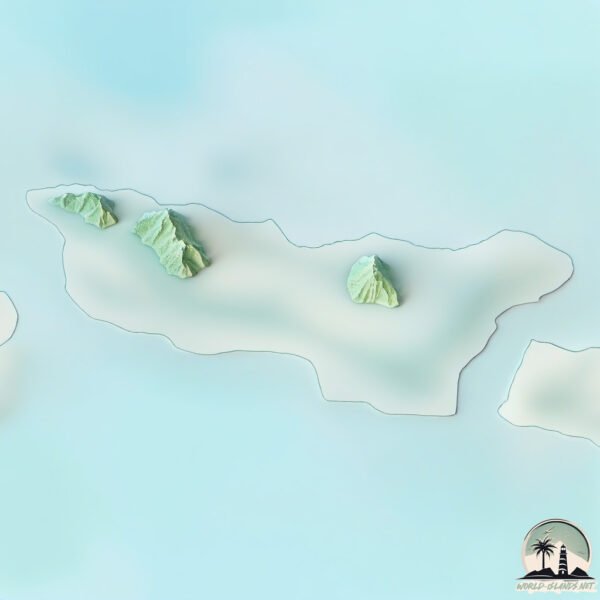Moa Island

Welcome to Moa Island, a Tropical island in the Banda Sea, part of the majestic Indian Ocean. This guide offers a comprehensive overview of what makes Moa Island unique – from its geography and climate to its population, infrastructure, and beyond. Dive into the details:
- Geography and Size: Explore the island’s size and location.
- Climate and Weather: Weather patterns and temperature.
- Topography and Nature: Uncover the natural wonders of the island.
- Infrastructure and Travelling: Insights on reaching, staying, and making the most of your visit.
- News and Headlines: Latest News.
Geography and size of Moa Island
Size: 364.1 km²
Coastline: 98.1 km
Ocean: Indian Ocean
Sea: Banda Sea
Continent: Asia
Moa Island is a Large Island spanning 364 km² with a coastline of 98 km.
Archipel: Malay Archipelago – The world’s largest archipelago, located between mainland Southeast Asia and Australia, known for its immense biodiversity and cultural diversity.
Tectonic Plate: Pacific – The world’s largest tectonic plate, covering much of the Pacific Ocean, known for the Pacific Ring of Fire with extensive seismic and volcanic activity.
The geographic heart of the island is pinpointed at these coordinates:
Latitude: -8.17692372 / Longitude: 127.94222906
Climate and weather of Moa Island
Climate Zone: Tropical
Climate Details: Tropical Savanna, Wet
Temperature: Hot
Climate Characteristics: Defined by distinct wet and dry seasons with high temperatures year-round. Pronounced rainfall occurs during the wet season, while the dry season is marked by drought.
Topography and nature of Moa Island
Timezone: UTC+09:00
Timezone places: Asia/Tokyo
Max. Elevation: 269 m
Mean Elevation: 30 m
Vegetation: Agricultural Mosaic
Tree Coverage: 22%
The mean elevation is 30 m. The highest elevation on the island reaches approximately 269 meters above sea level. The island is characterized by Hills: Gently sloping landforms with rounded tops, having a maximum elevation between 200 and 500 meters. Hills contribute to a varied landscape on islands.
Dominating Vegetation: Agricultural Mosaic
A mix of cropland and natural vegetation, often seen in rural landscapes where agricultural fields are interspersed with patches of natural habitats. Moa Island has a tree cover of 22 %.
Vegetation: 12 vegetation zones – Exceptionally Diverse Island
Islands with more than ten vegetation zones are among the most ecologically rich and varied in the world. These islands are akin to miniature continents, boasting an incredible array of ecosystems. The sheer range of habitats, from high peaks to deep valleys, rainforests to deserts, creates a mosaic of life that is unparalleled. They are crucial for conservation and ecological studies.
Infrastructure and Travelling to Moa Island
Does the island have a public airport? yes.
Moa Island has a public and scheduled airport. The following airports are located on this island: Jos Orno Imsula Airport.
Does the island have a major port? no.
There are no major ports on Moa Island. The closest major port is DILI, approximately 246 km away.
The mean population of Moa Island is 18 per km². Moa Island is Gently Populated. The island belongs to Indonesia.
Continuing your journey, Pulau Lakor is the next notable island, situated merely km away.
A little tour around our beautiful island home (Moa island , Torres Strait) 🌬🌊



Indonesia is classified as Emerging region: MIKT: Mexico, Indonesia, South Korea, and Turkey – Economies recognized for their development potential and emerging market status. The level of income is Lower middle income.
News – Latest Updates and Headlines from Moa Island
Stay informed with the most recent news and important headlines from Moa Island. Here’s a roundup of the latest developments.
Please note: The data used here has been primarily extracted from satellite readings. Deviations from exact values may occur, particularly regarding the height of elevations and population density. Land area and coastline measurements refer to average values at mean high tide.
